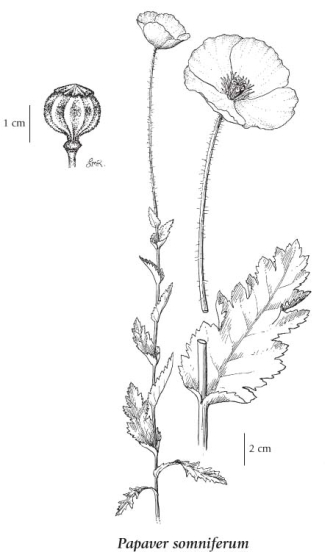Opium poppy is an introduced species in North America that originates from southeastern Europe and western Asia. It it a widely grown garden and food plant that has naturalized across the US and Canada (BC, MB, NB, NF, NS, ON, QC, SK) (
USDA 2010). In BC, 'wild' plants are reported from several locations, including Vancouver Island and the Queen Charlotte Islands. This is a distinctive annual herb from a taproot with solitary papery white, pink or or purple flowers and nodding flower buds. Basal leaves are lacking or fall off early in the season. Capsules are hairless and round. The tiny seeds spread easily in the garden and escape is common. This species has been described by
Randall (2007) in the
Global Compendium of Weeds as an "agricultural weed, casual alien, cultivation escape, environmental weed, garden thug, naturalised, noxious weed".
The seeds of the opium poppy are harvested from dried seed pods for use as an ingredient in many foods, and they are pressed to yield poppyseed oil. In the UBC herbarium, there is a single specimen record from "west of Sechelt", where it was collected along Route 101 by Gerald Straley in 1977.
